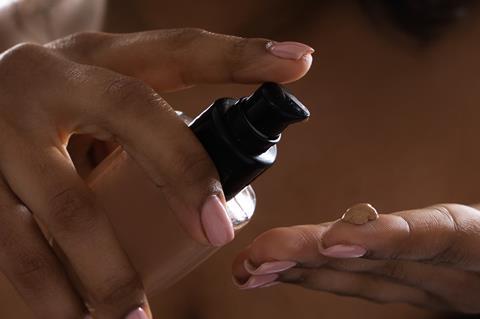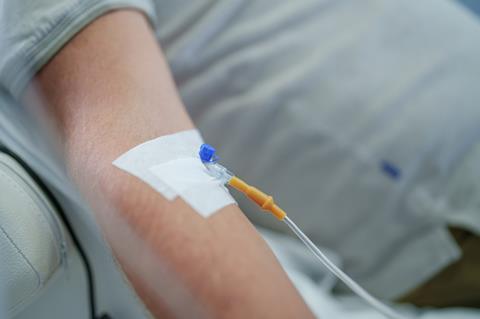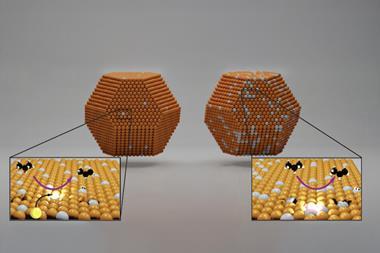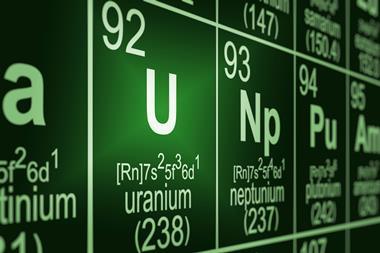Nearly 15,000 substances are thought to belong to the family of per- and polyfluoroalkyl substances (PFAS), which have been linked to a range of environmental and health problems. However, these compounds have become a vital, but largely unsung, part of modern life and are used in a vast array of ways. Plans are afoot in many countries to phase out many of these chemicals, but while it is relatively simple to replace them in some products, it is much harder in others.
Clothing

PFAS are attractive for clothing, especially raincoats, children’s apparel and athleticwear, because they confer water- and stain- resistance and make garments more breathable. Recognition of the harmful effects of PFAS has meant that some manufacturers are already moving away from them.
Several big-name outdoor clothing manufacturers are pledging to go totally PFAS-free. For example, Patagonia – a major US retailer of outdoor recreation clothing – has promised to convert all of its durable water-repellent membranes and finishes to non-fluorinated alternatives by 2025. In spring 2024, about 96% of its materials by weight were water-proofed without PFAS. There is no one-size-fits-all solution in clothing, however. One PFAS alternative might work on nylon but not on polyester, Patagonia explains.
A few years ago the clothing conglomerate VF, which owns various well-known American clothing brands like The North Face and Timberland, announced plans to phase out PFAS by 2025. The company says its chemical management system screens suppliers to ensure that substances of concern don’t enter VF’s supply chains.
Some experts are concerned that there’s little transparency about what these alternatives are
However, some manufacturers such as WL Gore & Associates – the US multinational that developed the waterproof, breathable Gore-Tex material containing PTFE – have found eliminating PFAS tricky. Gore & Associates’ original target for completely removing such compounds from its waterproof clothing was the end of 2023, but the company says it proved impossible to meet that. It now claims to be on track to transition the vast majority of its consumer portfolio by end of 2025.
While Gore & Associates states that PTFE is not a perfluorochemical of environmental concern and does not degrade into such substances, growing research suggests that many of the compounds used to make PTFE may also pose health risks.
While substitutions of many PFAS in clothing is being welcomed, some experts are concerned that there’s little transparency about what these alternatives are as they are often labelled trade secrets.
Electronics

PFAS have found their way into many electronics, including smartphones. This is because they’re heat resistant, flame retardant, hydrophobic, and display thermal insulation as well as friction-reducing properties. Unfortunately, they’re particularly tricky to replace in electronic products.
Fluoropolymers have excellent resistance to strong acids and bases used to produce electronics like circuit boards. Epoxy laminates and polyimides are two possible substitutes, as well as less common options that include liquid crystal polymers, polyester, polyethylene naphthalate and ceramics, according to a recent analysis by the non-profit environmental organisation ChemSec. However, the non-profit points out that polytetrafluoroethylene (PTFE), also known as Teflon, cannot be easily substituted in printed circuit/wiring boards without a complete redesign of the equipment.
When it comes to PFAS-free options for insulating wires and cables to resist fire, corrosion, moisture and cracking, ChemSec highlights polyvinylchloride, polypropylene, polyethylene, neoprene and silicone, among other options.
Cookware

Cookware is one of the earliest uses of Teflon or PTFE, which was first synthesised over 80 years ago. It is extremely hydrophobic and lipophobic, giving pots and pans a non-stick finish.
A couple of years ago, Consumer Reports tested three recommended nonstick frying pans and found that the PTFE-coated pan had measurable amounts of perfluorooctanoic acid (PFOA) and several other PFAS. Bakeware, however, tends to have a mix of PFAS polymer coatings and is more complex in its composition, which complicates analysis of it.
Alternatives to PFAS-coated cookware are simpler to develop
Chemicals like PFOA – exposure to which human epidemiological studies have linked to a range of health problems including cancer – are often used as a processing agent in the manufacture of PTFE coated cookware, while other PFAS may also be produced by PTFE degradation over time.
Alternatives to PFAS-coated cookware are simpler to develop as a replacement coating doesn’t necessarily need to be developed. Cast iron, ceramic and stainless steel pans can be adequate stand-ins, although potentially with some loss of performance. Beyond stovetop cookware, there is also glass for baking.
Food packaging

Some packaging contains PFAS to repel grease, for example fast food wrappers and pizza boxes. One study published last year found PFAS chemicals in single-use paper, cardboard and plant-based moulded fibre food containers from 17 countries across Africa, Asia, Europe, North America, Latin America and the Caribbean. The research team identified fluorotelomer alcohols, precursors of PFAS chemicals, and also PFOA in food packaging. Overall, 64 out of the 119 samples contained PFAS, with four above EU limits of 25 parts per billion for PFOA. The study’s authors suspect that PFOA wasn’t intentionally included but is a breakdown product from other, larger PFAS used.
Regulation seems to make a big difference. PFAS have been banned in paper and board food packaging in Denmark since July 2020 and none of the sampled French fries bags bought there contained PFAS. However, PFAS were found in these items purchased in the UK and the Czech Republic.
Untreated cardboard is the simplest way to displace PFAS in food packaging
In the US, the Food and Drug Administration (FDA) announced in February that greaseproof food packaging materials containing PFAS are no longer sold in the country. This is the result of a voluntary phase-out by food packaging manufacturers.
Instead of using PFAS in food packaging coatings, materials like starch, plant proteins and chitosan can serve as good alternatives, a US Department of Agriculture review study concluded in 2021. In many cases, untreated cardboard is the simplest way to displace PFAS in food packaging.
Cosmetics

You might not expect to find PFAS in cosmetics, but they are added to condition and smooth the skin and hair, improve consistency and texture, and make products like mascara and lipstick more durable, spreadable and water resistant.
These chemicals can also find their way into cosmetics accidentally due to raw material impurities or the breakdown of intentionally added PFAS ingredients that form other types of PFAS.
PFAS aren’t vital ingredients for cosmetics and an international team of researchers proposed a few years ago that they be phased out. This group concluded that if PFAS in these products were needed for their technical function, such as water repellence or ease of spread, then alternatives already appear to be readily available given the ‘rapid phase out by retailers’.
New Zealand became one of the first countries to ban PFAS in cosmetics
Cosmetics giant L’Oreal said in 2018 it would phase out all PFAS in its products and that substitution plans are well underway. But earlier this year, the FDA reported that 31 PFAS were found in 570 cosmetic products on the market. Common types of PFAS the agency identified in these products were PTFE or Teflon, perfluorooctyl triethoxysilane, perfluorononyl dimethicone, perfluorodecalin and perfluorohexane.
The percentage of cosmetics products on the European market that contain PFAS as a listed ingredient is estimated to be 1.4%, according to the Organisation for Economic Co-operation and Development. By comparison, a 2021 analysis led by scientists at the University of Notre Dame in Indiana found that 56% of foundations sold in the US and Canada contained high levels of fluorine, a marker for PFAS.
Earlier this year, New Zealand became one of the first countries to ban PFAS in cosmetics, and this will come into effect at the end of 2026.
Alternatives to PFAS in such products include fatty acids derived from estolide oils, synthetic waxes with boron nitride and zinc oxide, polyamide powders and polyethylene-based wax.
Firefighting foams

Since the 1970s, PFAS have been used in fire-fighting foams. They work by forming a ‘blanket’ over liquid fuel that prevents flammable vapours from escaping the liquid, helping extinguish the fire, the US Fire Administration explains. There are fluorine-free fire-fighting foams but the agency has said that those with PFAS are more effective.
Amid growing concern about the impact of PFAS on the environment and human health, the US Department of Defense (DOD) issued a new performance specification for firefighting foams used by the military in January 2023, which lays out requirements for firefighting foams on military bases. It states that they must be capable of effectively extinguishing liquid hydrocarbon fuel fires without PFAS. Last year the DOD announced that it would stop purchasing PFAS-containing firefighting foams and phase them out by October 2024, but earlier this year the agency told to Congress that it anticipates needing to submit two extensions that will push that deadline to 1 October 2026.
Foams without PFAS may be more prone to degradation and separation in storage
Meanwhile, the Arkansas-based environmental consulting outfit Montrose Environmental says there are practical concerns with transitioning to PFAS-free foams, including that existing firefighting equipment might need to be modified or replaced to handle newer foams. In addition, these foams without PFAS may be more prone to degradation and separation in storage.
The DOD currently lists three PFAS-free firefighting foams that can be used for military purposes. Now that fluorine-free foam has been added to the DOD’s approved list, airport authorities and other government agencies in the US will have to begin the switch. The GreenScreen list, an independent, non-profit certification standard, has more than 45 PFAS-free firefighting foams on it.
In the UK and Europe, such fluorinated foams are still allowed but restrictions and phase-out timelines are in place. In Australia, two of nine states have banned fluorinated foams for use in training and testing.
Automotive

As fluoropolymers resist high temperatures, they are extremely prevalent in the automotive sector. They are used to keep a car’s brakes working smoothly and efficiently, and prevent leaks, as well as in O-rings seals in fuel containment systems and fuel injectors. These chemicals are also used to make vehicles greener by providing critical functionality to meet evaporative and tailpipe emissions standards. And when it comes to fuel cells and batteries in electric vehicles, fluoropolymers improve safety while maintaining high voltages.
Automotive lubricants is another place where these chemicals can be found. They also function as additives in hydraulic fluids to reduce surface tension and prevent fires, as well as evaporation, and PFAS are used in automotive cleaning fluids as well because they repel water, oil and dirt.
The US vehicle manufacturer Ford emphasises that PFAS help to protect consumers and are crucial for the industry. ‘From engines and brakes to fuel components and electronics, most modern automotive systems rely on PFAS’s durability and resistance to heat, chemicals and abrasion and vapour-barrier characteristics,’ Ford explains. ‘The sheer scope and complexity of identifying all PFAS in the intricate global automotive supply chain is practically insurmountable.’
‘The sheer scope and complexity of identifying all PFAS in the intricate global automotive supply chain is practically insurmountable’
Ford says there are no suitable replacements for polyvinylidene fluoride (PVDF) – a polymer used as a binder and coating for separators in lithium-ion batteries for electric vehicles that is deemed a PFAS. ‘To our knowledge, there is no commercially available technology that exists in the world today which would allow for the production of electric vehicle batteries without PVDF,’ the company says.
Ford also claims that there is currently no production alternative to fluorine rubber, which is used extensively on engine and fuel system components to prevent evaporative emissions into the environment and meet pollution regulations.
‘Any potential PFAS-free alternates must meet durability and safe operation standards that meet or exceed current quality in order to be deemed a suitable replacement. This takes considerable resources and time,’ the Motorcycle Industry Council cautioned.
Healthcare

In medical implants and devices, PFAS are used to prevent infections, friction and clots. They are found in catheters, stents, surgical meshes to repair hernias and biopsy needles, and are used in medical device coatings to ensure that their surface is sufficiently hydrophobic and less likely to stick to cells and bodily fluids like blood.
‘Without PFAS, these devices could be at a higher risk of implant failure or clogging and may need to be replaced more often, resulting in higher medical costs and more potential pain and risk for patients,’ the American Chemistry Council (ACC) warns. The carbon–fluorine bond in PFAS makes the chemistries uniquely durable and nonreactive, and therefore very difficult to substitute in healthcare settings, the trade group notes.
PFAS are integral to everything from ventilators to Covid-19 test kits, according to the ACC. They are also used in x-ray film, video endoscopes, and protein-resistant and sterile components like filters, tubing and seals for kidney dialysis machines. These chemicals also serve as a propellant in many metered dose inhalers used to treat lung conditions.
PFAS’s special characteristics make them very difficult to substitute in a medical setting
The ACC further notes that PFAS are essential for maintaining the supply chain for medicines. These substances are used in packaging for medicines, as well as surgical tools, implantables and syringes, to keep out potentially damaging humidity and help extend the shelf life of dry pills and powders.
Beyond drugs and medical devices, PFAS also help to maintain sterile hospital environments. These chemicals are used as coatings on items such as hospital gowns and divider curtains to help prevent the transmission of disease. They can also be found in wall and floor paints to increase the effectiveness of biocides in eliminating infections. The ACC argues that PFAS’s special characteristics make them very difficult to substitute in a medical setting, and the Advanced Medical Technology Association in the US agrees.
Some companies, like Cavero Coatings in Illinois, are making progress developing water-based, low-friction, biocompatible medical device coatings with very low PFAS content. Another potential PFAS alternative is medical-grade silicone, according to the Norwegian chemical company Elkem. Like fluoropolymers, silicone has many of the properties that make them prized by so many manufacturers and they are already used as a lubricant or coating in vials, hypodermic needles and other medical products. However, Elkem acknowledges that PFAS outperform silicones in some roles such as resisting oil and aggressive chemicals.

















No comments yet